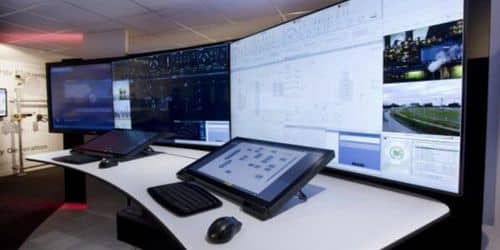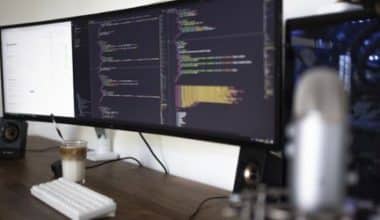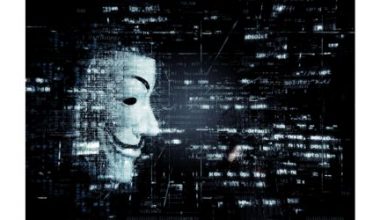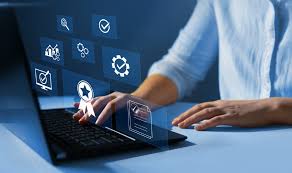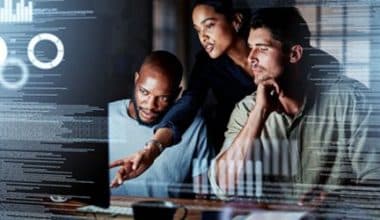It has been demonstrated time and again that communication between a patient and their healthcare professional is essential to the healing and rehabilitation process. Remote patient monitoring significantly contributes to this growth in trust and transparency. Hospital staff can provide better care and faster intervention with remote monitoring software. This improves patient oversight beyond spot checks. Healthcare providers now also have the ability to monitor patient vitals in real time and analyze historical trends. Integration of actionable data with a user-friendly interface enables timely analysis and intervention, saving lives and reducing costs. We’ll also discuss remote temperature monitoring and RM Jobs.
Patient Remote Monitoring
Remote patient monitoring devices can be helpful whether you’re an IT guru or a frontline healthcare worker. The patient population you serve will be more active and informed using the RPM device.
There’s a good reason why 88% of hospitals and clinics have already purchased or are considering purchasing remote patient monitoring equipment. You and your care team may strengthen bonds with patients and boost outcomes by exchanging health data through RPM technologies, much as you and your team do with friends and family using smartphones and other digital devices.
Remote Patient Monitoring Software
Picture yourself being able to monitor your patient’s acute or chronic diseases from anywhere in the world and immediately report and analyze your findings. Clinicians and program managers can do this simultaneously with the help of remote patient monitoring software.
Whether you have a patient diagnosed with diabetes, hypertension, arrhythmia, or dementia; Keep an eye on a diet or pregnancy plan for suffering from temperature. Through the use of remote patient monitoring software, your patients can report on their vitals and surroundings from the comfort of their own homes or workplaces.
These non-invasive gadgets, such as Fitbits, wearable heart monitors, Bluetooth-enabled scales, glucose monitors, skin patches, shoes, belts, and maternity care trackers, will help capture, transmit, process, and store patient data, which your physicians can then retrieve at any time.
As a result of remote patient monitoring software, the healthcare experience for a wide variety of patients is less stressful and chaotic. Also, professionals of all stripes can perform their duties more proficiently and, ultimately, with more satisfaction. Through the use of sensors that provide alerts to both family members and medical practitioners, this type of telehealth can also provide comfort and reassurance for the relatives of patients who are at a higher risk of falls or accidents.
Before selecting remote patient monitoring software to solve the unique process gaps and technological issues of your team, it is essential for your clinical and IT directors to research and debate the functionalities and reviews of the many RPM solutions available on the market.
How Does Patient Remote Monitoring Work?
Communication between patients and healthcare practitioners can be facilitated through RPM devices by means of digital technology. Patients conduct self-monitoring throughout the day to collect health data. They then send that data to their clinicians or technicians in encrypted electronic messaging.
Subsequently, doctors, nurses, and other medical staff in clinics, hospitals, ICUs, nursing homes, and remote monitoring centers analyze the data on a daily basis. This, meanwhile, is to determine what course of action is best. They can provide much-needed confidence that therapy is working, prompt alerts to change medicines, or guidance to visit the emergency room if necessary by continuously adjusting each treatment plan.
Remote patient monitoring software enables clinicians to keep monitoring and adjusting a patient’s therapy. This usually comes after they have been discharged from the emergency room or a care facility, often eliminating the need for the patient to leave home.
Clinicians are able to collect data more frequently and reliably when they can monitor weight, vital signs, blood pressure, blood sugar, blood oxygen, heart rate, and electrocardiograms from any point of care. This however can not be said with traditional in-office patient appointments. This instantaneous two-way communication has the potential to save the lives of individuals with high-risk pregnancies, acute cardiac diseases, or dementia.
What are Remote Monitoring Examples?
The continuous glucose monitor and the digital blood pressure monitor are two of the most common examples of patient monitoring devices. The continuous glucose monitor helps diabetic patients remember to take their insulin. The digital blood pressure monitor on the other hand enables patients to remotely send their blood pressure and blood oxygen levels to their physicians.
What is Remote Monitoring in Healthcare?
It involves the use of remote patient monitoring (RPM) technology that enables medical professionals to assess, report on, and monitor the acute or chronic diseases of their patients even when they are not physically present in the hospital or clinic. RPM makes it possible to gain insight into the disease condition of a patient in real time, which in turn enables the clinician to make proactive clinical decisions.
What is Remote Home Monitoring?
Patients managing their own COVID-19 symptoms at home were the primary focus of the remote home monitoring models. Basically, its primary goal was to enable the early diagnosis of deterioration (including those who had not been admitted to the hospital as well as those who had been discharged). The idea behind these models’ programming suggested that early cases of deterioration may be discovered and addressed if individuals were able to take the necessary regular observations while still living at home and communicate them to the healthcare personnel responsible for their care.
What are the Benefits of Remote Patient Monitoring?
Generally, more and more doctors are beginning to see the benefits of RPM systems. This has led to a rise in widespread use. Research from VivaLNK found that over half of doctors think RPM adoption would match that of in-patient monitoring within the next five years. Clinicians profit from remote patient monitoring in numerous ways. This includes enhanced efficiency, decreased expenses, and improved management of chronic illnesses that it allows for.
Patients on the other hand are becoming more accepting of RPM and other technology-enabled services.
How Do You Remote Monitor a Patient?
Digital technology is used by remote patient monitoring equipment to transmit data between patients and doctors. Patients conduct self-monitoring throughout the day to collect health data, and then send that data to their clinicians or technicians in encrypted electronic messaging.
Neural Remote Monitoring
Remote neural monitoring is a functional neuroimaging technique that allows for the remote collection of EEG data from the human brain without the use of electrodes or any physical contact. Remote neural monitoring is claimed to have been developed by the National Security Agency (NSA). Likewise, it was claimed that the NSA can decode this data to get subvocalizations, visual, and aural data are also made.
As a result, it’s possible to read someone’s mind secretly and without their consent. Remote Neural Monitoring has been accused of being used by multiple groups to spy on and harass persons in the United States and elsewhere.
Understanding Neural Remote Monitoring
It’s a machine that can read your mind. It’s a psychological operation (called “psycho warfare”) designed to cause harm to the victim’s mind. The vast majority of the time the neural remote monitoring system is used to investigate alleged criminals, but it can also be used for espionage. Neural remote monitoring has gained worldwide popularity and is utilized by people on every continent. Commonly utilized in gangstalking, the effectiveness of which would be diminished without constant remote neurological monitoring.
Although the controversial MKULTRA project of the 1950s was primarily concerned with medicines for mind control, it also included neurological research into “radiation” (non-ionizing EMF) and bioelectric research and development. This is basically where remote neural monitoring gets its start. “Apparatus and method for remotely monitoring and changing brain waves,” was issued by the United States Patent and Trademark Office on April 20, 1976. The method described in the patent involves sending signals at 100 and 210 MHz to the brain, where they are modified by brain waves and then picked up by a receiver.
However, there are allegations that the NSA started using Remote Neural Monitoring extensively in the 1980s. A former NSA employee named John St.Claire Akwei sued the agency in 1992, and most of what is known about it come from the evidence produced in that lawsuit. It details a vast network of sophisticated equipment and personnel used to keep tabs on hundreds of thousands of people across the United States and the rest of the world. One’s subvocalizations, as well as visual and auditory brain images and noises, are all within one’s reach.
Remote Monitoring of Temperature
Temperatures often remain significantly below freezing for several days, weeks, or even months during the harsh winter months. Many people dislike having to brace themselves against the cold for extended periods of time. In addition, it can cause issues for the plumbing systems of permanent and seasonal dwellings like cottages, cabins, and mansions. Cold temperatures can cause water in pipes to freeze. Pipes may rupture, water may overflow, and expensive damage may be done to your home as a result of this. Remote monitoring of your house temperature might be your saving grace.
A fully functional weather station may not be necessary for certain people. Remote temperature monitoring may be all that’s needed in certain scenarios. The availability of numerous remote temperature monitoring devices (wireless), some of which are as feature-rich and interconnected as their weather station counterparts.
A remote temperature monitoring device is quite flexible in terms of placement. Installing one in a greenhouse can help you maintain the ideal temperature and humidity for plant growth. And in other parts of your home, you can check the performance of your HVAC system.
Additionally, you can put to good use a remote temperature monitoring device for this exact purpose and to guarantee the continued dryness of your basement. There is a wide range of complexity in the features available in wireless thermometers, from simple ones that only measure temperature to those that can do much more. These temperature monitors include capabilities for monitoring and analyzing data gathered on things like temperature, humidity, and barometric pressure.
Remote Temperature Monitoring System
You should always have some kind of security system in place to keep an eye on your home even while you’re not there. Hence, keeping an eye on your property with a temperature monitoring system allows you to react quickly in the event of any problems.
Likewise, when you’re away from your primary or vacation home, a remote temperature monitoring system can help you feel secure. You can also reduce the risk of costly property damage with the help of our temperature alarm systems. Any time there is a fluctuation in temperature, you will be notified instantly thanks to constant monitoring. You can keep your home toasty warm all year round, no matter where you live.
Additionally, if you have a remote temperature monitoring system, you can get updates on the home’s status in real-time. Using the website or smartphone app, you may monitor the status of your home or business from afar at any time. For extremely out-of-the-way places with no internet connectivity, cellular and satellite services are available. If you’re a homeowner who wants to receive immediate alerts in the event of a problem, Temperature remote monitoring devices are your best bet.
Remote Monitoring Jobs
The rise of remote patient monitoring has presented incredible job possibilities for making a good living. However, not all remote monitoring jobs pay well or lead to stable employment.
Want to know what the highest-paying remote monitoring jobs are? Curious about the most in-demand remote monitoring jobs? In the list below are some of the best remote monitoring jobs you can choose from;
- MWD Operator – Field Consultant
- Quality Control Supervisors
- Cadet Hydrographer
- Senior C++ developer 3D Simulators
- Surgical Mobile C-Arm Technical
- SSEC~Real Time Systems Design and Delivery Engineer
- Operations Specialist
- Environmental Monitor
- JavaScript Developer
- Commissioning Specialist
- Specialist, Network Operations
- Senior Energy Engineer
- NET Developer
- Operations Coordinator-offshore
- Forecast Analyst
- Control Room Intern
- Senior Archaeologist
You might be wondering if the above jobs are the only high-paying remote monitoring opportunities you can find. The answer without a doubt is nope. These days, remote monitoring jobs opportunity are abundant.
How to Choose the Best High-Paying Work-from-Home Job for You
The aforementioned list should have given you some ideas about potential high-paying remote monitoring jobs in a wide range of fields.
While looking at the average probable wage in a field, also think about whether or not it’s something you’re interested in and whether or not you already have the necessary skills.
For the most part, you can get a virtual job without any experience or abilities linked to the position. However, whatever abilities or experience you bring to the table will be much appreciated.
If you don’t have any relevant experience, you should think about the qualifications prospective employers need and the number of other applicants.
Conclusion
It has been shown that two-way communication between a patient and their healthcare professional is essential to the healing process. Transparency and trust in the healthcare system are bolstered by RPM equipment. They help people learn more about their diseases and available treatments, which gives them more agency over their own healthcare. When both the patient and the doctor have access to more information, everyone benefits from decreased anxiety and increased chances of success.
Remote patient monitoring can help reduce readmission rates in emergency rooms, hospitals, and other care institutions. Patients are better able to focus on their recovery when they don’t necessarily need to make repeated trips back and forth between institutions. Stress reduction is an essential component of any effective treatment program, and biometrics may show this with every shift in a patient’s health status.
FAQs
What are the types of remote patient monitoring devices?
Here are a few of the most promising new devices that may save unnecessary emergency room visits for your patients:
- Real-time Glucose monitor
- Heart Rate Monitors
- Medical Alert Systems
- Anticoagulation testing device
- Blood Pressure Monitor
How efficience is remote monitoring software ?
You are well aware that cardiovascular disease, diabetes, and Alzheimer’s are among the top ten causes of death in the United States. However, remote patient monitoring software can aid in tracking the development of these illnesses. And as a result, assisting your staff in more effectively managing them?
What equipment is required for monitoring patients remotely?
Cellular networking or Bluetooth is a necessity to electrically connect RPM devices. Blood pressure monitors, weight scales, blood glucose meters, and spirometers are the most typical RPMs you might need.
Related Articles
- Remote Work Security Threats: What Do You Need to Know
- Practice Management Software: Definition & Top Picks
- Predictive Analytics: Definition, Examples, and Benefits
- TEAM MANAGEMENT TOOLS: All You Need To Know, Types, and Free Team Management Tools
